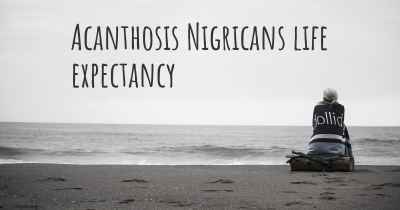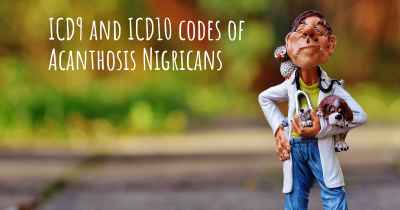What are the latest advances in Acanthosis Nigricans?
Here you can see the latest advances and discoveries made regarding Acanthosis Nigricans.

Acanthosis nigricans (AN) is a skin condition characterized by dark, thickened patches of skin, typically occurring in the folds and creases of the body. It is often associated with underlying medical conditions such as obesity, insulin resistance, diabetes, hormonal disorders, and certain medications. While there is no cure for AN, recent advances have focused on understanding its causes, improving diagnosis, and exploring treatment options.
1. Genetic and molecular research: Scientists have made significant progress in identifying the genetic and molecular factors contributing to AN. Several genes have been implicated in the development of AN, including those involved in insulin signaling pathways and skin pigmentation. Understanding these genetic mechanisms can provide insights into the underlying causes of AN and potential targets for future therapies.
2. Insulin resistance and metabolic syndrome: AN is strongly associated with insulin resistance and metabolic syndrome, which are risk factors for type 2 diabetes and cardiovascular disease. Recent studies have focused on elucidating the complex relationship between AN, insulin resistance, and metabolic abnormalities. By addressing these underlying metabolic issues, it may be possible to improve AN symptoms and reduce the risk of associated health complications.
3. Diagnostic advancements: Accurate diagnosis of AN is crucial for identifying underlying medical conditions and initiating appropriate treatment. Dermatologists now have access to various diagnostic tools, including dermoscopy, skin biopsies, and imaging techniques, to aid in the diagnosis of AN. These advancements help differentiate AN from other skin conditions and guide clinicians in determining the underlying cause.
4. Treatment options: While there is no specific cure for AN, several treatment modalities have shown promise in managing the condition and improving skin appearance. Topical treatments such as retinoids, salicylic acid, and alpha-hydroxy acids can help reduce hyperpigmentation and thickening of the affected skin. Additionally, lifestyle modifications such as weight loss, regular exercise, and dietary changes can improve insulin sensitivity and metabolic health, potentially leading to a reduction in AN symptoms.
5. Laser and light-based therapies: Laser and light-based therapies have emerged as potential treatment options for AN. These techniques target the pigmented areas of the skin, promoting skin cell turnover and reducing hyperpigmentation. Various laser devices, including Q-switched lasers and intense pulsed light (IPL), have shown efficacy in improving AN-associated skin changes. However, further research is needed to optimize treatment protocols and determine long-term outcomes.
6. Patient education and support: Increasing awareness and understanding of AN among patients and healthcare providers is crucial for early detection and management. Educational resources, support groups, and online communities provide a platform for individuals with AN to share experiences, seek advice, and access reliable information. Empowering patients with knowledge about AN can help them actively participate in their own care and improve overall outcomes.
Conclusion: Recent advances in the understanding and management of Acanthosis nigricans offer hope for individuals affected by this skin condition. Genetic and molecular research, along with improved diagnostic techniques, have enhanced our understanding of AN's underlying causes. Treatment options, including topical therapies and laser-based interventions, show promise in managing AN symptoms. Additionally, addressing metabolic abnormalities and promoting patient education can contribute to better outcomes for individuals with AN. While further research is needed, these advancements pave the way for a more comprehensive approach to the diagnosis and treatment of AN.








